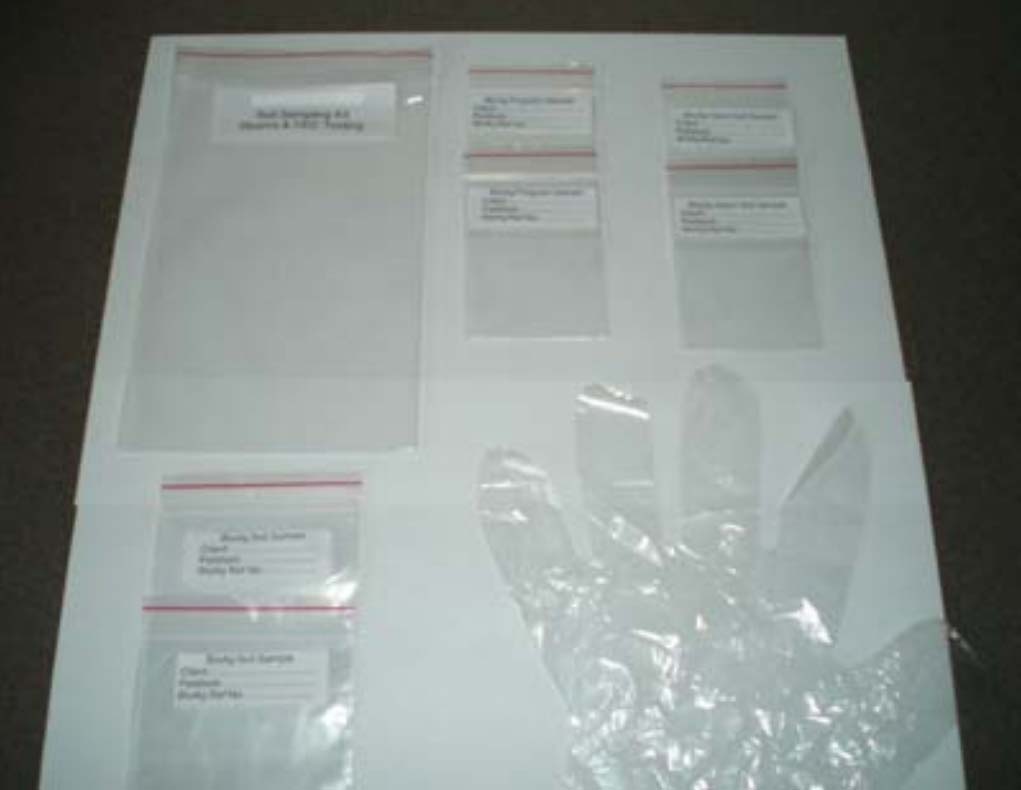
Agronomy
Topic
Soil sampling
Our agronomists need to have a clear picture of your existing soil nutrient situation before designing a custom program for your paddock or enterprise. Soil tests and tissue tests are an important part of the process. Our agronomists can help with sampling, submitting the samples for analysis and interpreting the results. If you’re new to soil testing or need help with the sampling we’d be delighted to help.
The soil sampling kit
The soil sampling kit (pictured below) contains:
- An outer poly bag
- Two 10 mm wide poly bags labeled BioAg Soil Sample
- Two smaller 7.5 mm wide poly bags labeled BioAg Program Sample
- Two 7.5 mm wide poly bags labeled BioAg Client Soil Sample
- A disposable poly glove to prevent contamination of the soil
- A Soil Sampling Procedure instruction sheet
- A Service Request Form which becomes a Tax Invoice on completion
- Two Paddock Information Sheets

Other equipment you will need
You will need a stainless steel soil sampling probe to take the core samples. These are available from rural merchants and are an important tool in any farmer’s kit. If you don’t have one and are unable to obtain one, call your BioAg Area Manager to borrow one. Always make sure that the probe is clean before use.
Sampling Procedure
Caution: Please follow the instructions below carefully to enable us to prepare a professional program for you. The analysis will only be accurate if the samples you collect are taken with great care.
- Clear any vegetable material from the top of the soil before sampling. Take the soil sample from the top of the soil to the depth of the aerobic zone – 10 to 15 cm. Use a clean probe to extract the core samples, and try to avoid any contact of the samples with your skin.
- Samples should be taken from soil types which have been farmed in a similar way. Use GPS or a drawing to identify the areas to be sampled. Avoid areas of waterlogging, erosion points, burnt residues and carcasses, fence lines, traffic areas, headlands, fertiliser dumps and animal camps
- Place the samples into a new or clean bucket and mix them with a clean spoon or similar instrument. Approximately 20 cores will be required for each
- Without touching the sample, place one cup of soil (250 ml) from the bucket into the 10 mm BioAg Soil Sample Bag, clearly and legibly mark all the requested details and remove excess air from the bag. Place this sample bag into the Soil Sampling Kit
- Again, without touching the sample, place ¼ cup (60 ml) of soil from the bucket into the BioAg Program Soil Sample Bag, clearly and legibly write down all of the requested details on the label and remove excess air from the bag. Place this sample bag into the Soil Sampling Kit
- Similarly, place ¼ cup (60 ml) of untouched soil from the bucket into the BioAg Client Soil Sample Bag, write the details on the bag as above, and remove excess air from the bag. Retain this sample bag in a clean storage area free from chemicals and out of sunlight, or send it to your BioAg agronomist for program recommendations. Your BioAg agronomist will advise you whether to send the samples or retain
- Place the Soil Sampling Kit Bag, the completed Paddock Information Sheets and the Service Request form in a Post Pack or Express Post Pack and address it to BioAg Pty Ltd, 22-26 Twynam Street, Narrandera NSW 2700. Note that the outer bag has the capacity to contain two Soil Sample Bags and two Program Soil Sample Bags (i.e. the samples required for tests from two
Need more information or assistance?
If you have any queries contact your BioAg Area Manager or the BioAg Office on 02 6958 9911 or sales@bioag.com.au.
Download procedure
Download a copy of our soil testing procedure, including a request form and paddock information sheet.

Recent Comments